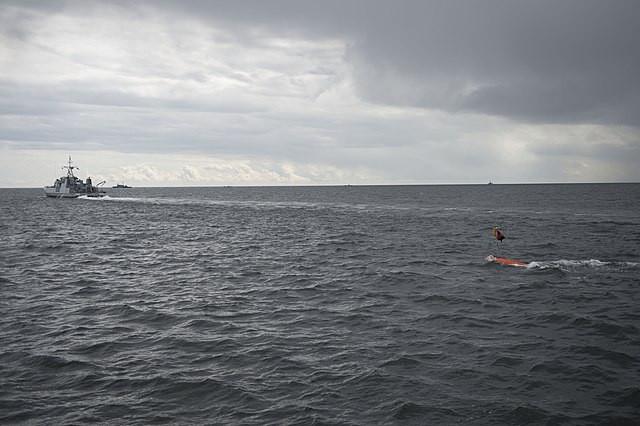Finnish and Swedish authorities have launched investigations into the ruptures of two critical undersea internet cables in the Baltic Sea, raising suspicions of sabotage. The incidents, which occurred on consecutive days this week, have heightened concerns among European leaders and drawn scrutiny toward a Chinese-flagged vessel reportedly present in the area.
The first rupture was reported on Sunday when the BCS East-West cable, connecting Lithuania and Sweden, was severed. On Monday, the C-Lion1 cable linking Finland to Germany sustained similar damage. Both cables were disrupted near Swedish islands, with Finnish authorities announcing Wednesday that they had opened a criminal investigation into the C-Lion1 rupture on suspicion of "aggravated criminal mischief and aggravated interference with communications."
Germany's Defense Minister Boris Pistorius expressed doubt over the likelihood of accidental damage, stating, "Nobody believes that these cables were accidentally severed." In a joint statement, the foreign ministers of Finland and Germany called the incidents "deeply concerning" and raised the possibility of hybrid warfare. The statement specifically mentioned Russia as a potential actor, echoing longstanding allegations against Moscow for engaging in sabotage and hybrid warfare across Europe.
These allegations have gained traction in light of previous warnings from the U.S. about Russian threats to critical undersea infrastructure. Reports of suspicious movements by Russian vessels in European waters and the activity of a Russian marine unit specializing in seabed surveillance have further fueled speculation. However, Moscow categorically denied involvement, with Kremlin officials calling the allegations "laughable" and "absurd."
While European officials appear to favor the sabotage theory, U.S. officials have suggested a different explanation. Two unnamed sources familiar with the preliminary assessment told CNN that the damage might have been caused by an anchor dragging from a passing vessel. They described the incidents as accidents, though they acknowledged the unusual timing of the two disruptions.
Amid the conflicting theories, attention has turned to the Chinese-flagged bulk carrier Yi Peng 3, which was reportedly in the vicinity during the cable ruptures. Vessel tracking data from Marine Traffic showed the 225-meter ship, which had recently departed from Russia's Ust-Luga port, stationary off Denmark's Baltic coast on Wednesday. Swedish authorities confirmed they were investigating the ship but did not provide further details.
During a press briefing on Wednesday, Chinese Foreign Ministry spokesperson Lin Jian commented on the situation, saying, "I am not aware of the situation." Lin emphasized that China "has always fully fulfilled its flag state obligations and requires Chinese ships to strictly abide by relevant laws and regulations." He added, "We also attach great importance to protecting the safety of undersea infrastructure and work with the international community to actively promote the construction and protection of submarine cables."
The Danish Armed Forces confirmed their presence near the Yi Peng 3 but declined to state whether they were actively pursuing the vessel. Meanwhile, Swedish law enforcement and prosecutors indicated that they were continuing to investigate the circumstances surrounding the breaches and had identified a vessel of interest.
These incidents occur amid growing geopolitical tensions and concerns over the security of Europe's infrastructure. Just last month, the European Union conducted its first-ever stress test on undersea cables, highlighting the critical importance of these networks for global communications and commerce.






